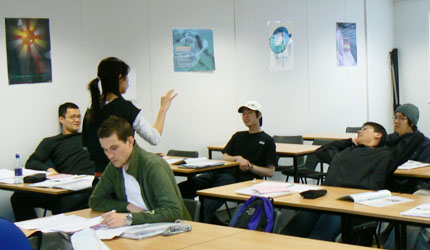What's the difference between Cantonese and Mandarin?
Many western people are confused with Chinese Cantonese and Chinese Mandarin. What is the difference between Cantonese and Mandarin? How are they related to traditional Chinese and simplified Chinese?
Mandarin is the official language in China. Cantonese is one of the Chinese dialects. In mainland China and Taiwan, most people speak Mandarin, while Cantonese is only spoken in China's Guangdong Province and Hong Kong. Cantonese is more popular among overseas Chinese because most Chinese immigrants in North America come from Guangdong and Hong Kong.
Traditional and simplified Chinese are only variations of the written forms, whereas Mandarin and Cantonese are related to its spoken form. They should not be confused, that is, Mandarin is not the same thing as simplified Chinese. Usually "simplified Chinese" is for Mandarin speakers, "traditional Chinese" is for Cantonese speakers and Taiwan Speakers. (Simplified characters are used in the PRC and Singapore. Traditional Chinese characters are used in Taiwan, Hong Kong, and Malaysia.)
Mandarin classes:
Junior Classes:
- Preschool Class
- Level 1(Class - 1A ~ 1G)
- Level 2(Class - 2A ~ 2G)
- Level 3(Class - 3A ~ 3K)
- Level 4(Class - 4A ~ 4K)
- Level 5(Class - 5A ~ 5G)
- Level 6(Class - 6A ~ 6H)
- Level 7(HSK3 - 7A ~ 7E)
- Level 8(HSK4 - 8A ~ 8E)
- Level 9(GCSE - 9A ~ 9C)
- Level 10(N5AS - 10A ~ 10C)
- Level 11(11H Higher - WG1/WG2/128)
- Level 12(Advanced Higher)


Adult Classes:
- Mandarin Adult Classes for Cantonese
- Beginners (A and B)
- Intermediate
- Mandarin Adult Classes for Foreigner
- Beginner
- Intermediate
- Higher

Cantonese classes:
- Level 1
- Level 2
- Level 3
- Level 4
- Level 5
- Level 6
- Level 7
- Level 8
- Level 9(SAQ N5)
- Level 10(SQA Higher)
- Level 11(SQA Advanced Higher)
- Adult Mandarin Class for Cantonese Speaker
- Bilinggual class
